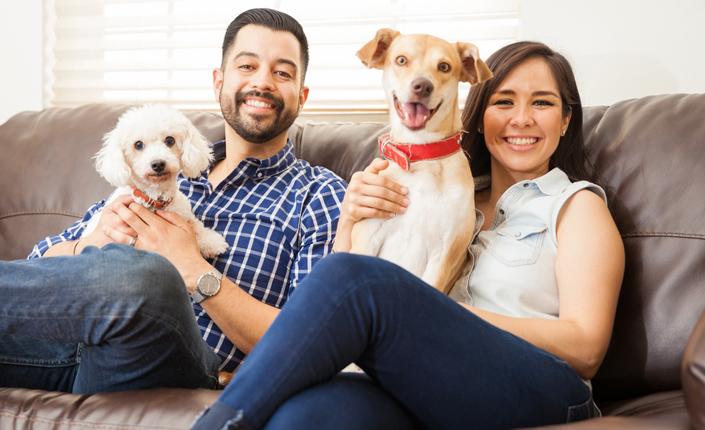
How to Properly Introduce a New Pet
You’ve purchased all the items on your new pet checklist and properly pet-proofed your home, now it’s time to introduce your new pet to their furry siblings!
While you and your fellow humans may be prepared for the arrival of another pet, your other pets won’t even realize that their life is about to change. Who knows how they’ll react once they figure out that this new friend is a permanent roommate and not a temporary guest?
Luckily, there are steps you can take to make the “getting to know you process” as seamless as possible. To ensure a smooth transition for all involved, take note of these Do’s and Don’ts.
DON’T force your pets to interact with each other.
DO introduce the new pet to your other animals slowly.
Ideally, you will have selected a new pet whose personality and temperament will jive with the rest of the animals in your home. Of course, you can never really predict how well animals will get along once they’re in the same environment for an extended period of time.
By taking things slow, you lower the risk of either pet reacting fearfully or aggressively. There may be sniffing, staring, hissing, or even disinterest. That’s okay! It may be a long road, but you’ll be glad you took gradual steps.
DON’T have your pets share the same space too soon.
DO keep the new pet in a separate room or crate to start.
Give your new pet a chance to get comfortable with their new surroundings. Each pet should take turns being in a confined space like a crate or separate room. So while the resident pet is in another place, the new pet will have a chance to explore the home and get acquainted with the scent of their new sibling.
When you leave the house, make sure that the new pet is safe in their crate or special room. Every interaction between your pets should be monitored closely. They shouldn’t be left loose in the house together in the early days of their relationship.
DON’T ignore indicators of aggression from either pet.
DO recognize signs of potential conflict and act accordingly.
Even with the best preparation, sometimes things don’t go as planned. If you sense that either pet is stressed or showing signs of aggression, it’s time to break things up before they escalate. First, try to distract both parties with a loud noise. Then, try to corral them into separate rooms for a timeout.
DON’T feel that you have to solve the problem of your pets not getting along on your own.
DO seek help from a professional trainer or animal behaviourist if the situation doesn’t improve.
You don’t need to do it alone! If the getting to know you process continues to be rocky at best, it may be time for a pet trainer or animal behaviourist to intervene. A professional will assess the situation and help you come up with strategies for easing unwanted tension.
Success may not happen overnight, but don’t be discouraged! It could take weeks or even months before your pets begin to develop a comfort level with each other. Good luck!
Every pet owner wants their pet to be happy & healthy and insuring your new pet early helps you get the best coverage possible. Accident & Illness coverage means you’re as prepared as you can be. Learn more and get a quote today: https://www.petsplusus.com/insurance-coverage/accident-illness-coverage
